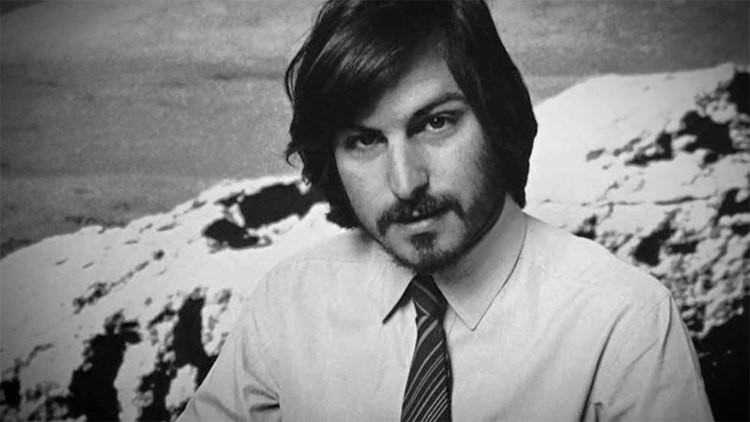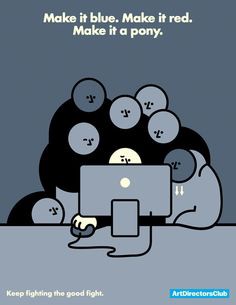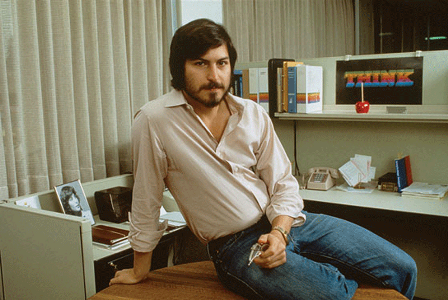“Design is not just what it looks and feels like. Design is how it works.”
– Steve Jobs
This quote is brilliant. Beyond brilliant. It’s probably one of a million incredibly inspirational thoughts Mr. Jobs nonchalantly had on a day to day basis. I bet it’s not even a good one. I bet all the best gems of insight he had weren’t even shared with the outside world. I bet he had so many he didn’t even care if we were writing them down anymore. The problem is, glossing over how certain things become fashionable and then quickly put by the wayside in the design world, it’s just overused. It became so popular at one point that I couldn’t escape painstakingly designed typographic treatments on my Tumblr, Facebook and so on. I’d cruise my daily sites in the morning along with my coffee looking for a quick visual rush to get the day started, and this quote was thoroughly screwing that up.
I’m digging the knife in deeper by writing this, it kills me to do it. But I don’t currently work in a place that caters to designers. Many of the people in my office work on PC’s, there are no bean bag chairs and if you brought up the idea of a slide installation security would most likely escort you out of the building. Disclaimer: If you work in a very fashionable design studio, you can pretty much disregard this entire thing, your killer office life understands you and your role as a designer. You don’t need this quote (as much) because it’s what designers and creative directors and UI experts who live and breath design already know. But right now I am the only designer in a sea of people who do numbers for a living, and as the only designer I have to defend what I know is good and relevant design.

Defending your own ideas isn’t easy, defending your ideas with the guy that signs your paychecks every month is downright scary. Early on I realized this is the guy I had to convince, and this guy runs fast. Really fast. So fast that any extra explanation would be overkill. Many would call his workload laughable and the consistency he takes it on is mind boggling. It took me months to learn how to phrase an entire discussion about design into a quick sentence or two. For a guy that can’t go without saying ‘um’ every other word, this was a serious challenge. I was originally so sure he didn’t care, that he had some ulterior motive or that the end result’s quality didn’t matter. He didn’t want to discuss design options, he wanted to see that the product worked, say yes or no and move on. Project after project had the same pattern. Work needed to be done, I was to be included at the last possible moment and quality was synonymous with speed. The ‘look and feel’ weren’t going to make or break a project, so it shouldn’t have taken that long. The role of a designer was entirely cosmetic, separate from the process of making quality products and services. And decorative details were logically not going to bring down the company.
Every designer at some point has been put in this position, where a client is asking for something that goes against the best possible outcome for themselves and their business. I can go on and on about readability and what is and isn’t in line with our current branding strategy, but until these things were seen as functional pieces of the equation, I was stuck as the guy that “makes it look good.” I was losing because my position at the company was thought of as entirely superficial. I was the one that sprinkled magic dust to make work look fantastic at the very end of each project.
What began over time is a series of projects becoming more and more complicated. A website went from small to large overnight. Suddenly print projects were put on hold for re-designing entire desktop applications. Ideas for mobile apps started raining from the sky. It was all the work I had always wanted, but it had no structure and design wasn’t seen as part of the process. The ecosystem of products and services needed to be mapped out, and no one had been able to nail down what that would look like to an end user.

I jumped headfirst into designing our user experience journeys and additionally tackle wireframes before the word “design” was even allowed to be a whisper in the room. This was rough considering it had never been a necessary step before. Steve’s quote suddenly became my war cry in kickoff meetings (kickoff meetings were also new). Quietly at first, then louder. I would always follow up with the explanation that there would be so many missed opportunities with the current structure. The design work was built on function and it became my job to educate in order to create better work.
What happened slowly over time was a lot of very failed attempts at building trust. Walking someone, let alone a group, who had never seen wireframes before through wireframes was downright painful (shameless plug: thanks InVision you’re the only thing that works). After proving that work could be churned out as quickly as possible, providing alternatives alongside the quicker work proved to be the breaking point. Work can be fast, but you may be missing out on so much more. And if you’re paying for the work, you better be getting your money’s worth. Once that trust was finally earned, I realized that the guy that signs my checks really did want quality work. He understood that there is a complicated series of tasks that needed time to be done correctly, he just didn’t originally see design as part of that process. In his mind the other leaders in the company built it, I just made it look good at the end.
I would love to end this with an explanation of how I single handedly changed company culture, but it has nothing to do with that. If your environment/boss/client views your role as a designer as someone who sprinkles glitter on projects, either get out now or get ready to really dig your heels in. It’s my biggest goal to transition into a relevant, design driven company that strives for more. That a website can become a better sales tool and that a desktop application can outdo the competition. That’s now only just possible because the guy that signs my checks is starting to understand that I do much more than decide what colors go where. In an environment that isn’t tailored to a creative staff, the first thing I should have set out to do is define my role and how it can contribute to make things better as a larger unit.
Even though this quote has become my war cry, I still kind of hate it. Not because it took over Tumblr for a time, but because it clearly pointed out what I was failing at as a designer. Not because I personally forgot that design seeps into all details, and not because good design can massively help products and services to work better, but because I was failing at educating the people I work with that the idea of design isn’t purely cosmetic or visual. And because I wasn’t pushing that idea my role as a designer was suffering. Now it has become a non-issue, there will always be discussions, but I have earned my trust. While I wouldn’t personally recommend sinking your heels in the ground and saying no, I would invest in taking the long road and educating those around you not just what you’re doing but why.
